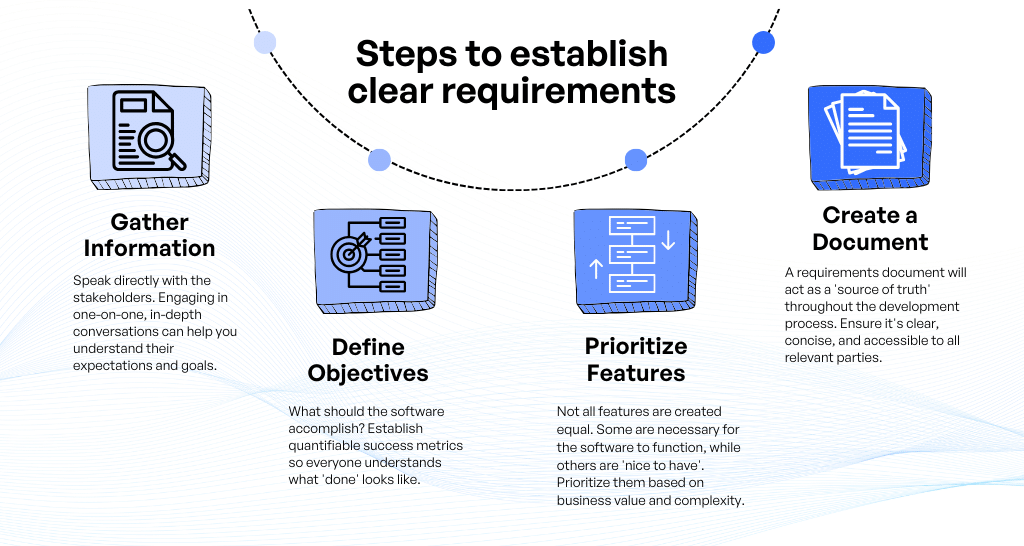
Delivering high-quality software consistently is a goal that every software development team aspires to achieve. In today’s fast-paced and competitive market, the ability to consistently deliver software that meets or exceeds customer expectations is crucial for the success of any organization. However, achieving this goal is not always easy and requires a combination of effective processes, skilled team members, and a commitment to continuous improvement.
In this article, we will explore the key factors that contribute to delivering high-quality software consistently. We will discuss the importance of establishing clear requirements, implementing robust testing strategies, fostering a culture of collaboration and communication, and leveraging automation tools and techniques. By understanding and implementing these factors, software development teams can enhance their ability to consistently deliver high-quality software products.
1. Establishing Clear Requirements
Delivering high-quality software consistently begins with a fundamental step: establishing clear requirements. But why is this critical, you might ask?
Well, understanding the client’s needs, how the software will be used, and the expected outcomes are key to creating software that not only functions well but also delivers on its promises. Without clear requirements, your team will be like a ship without a compass, aimlessly wandering in the vast sea of code, features, and technologies. So, how can you avoid this fate? By effectively communicating and defining your requirements.
Here are a few steps you can follow:

Remember, requirements are not set in stone and they may evolve as the project progresses. Ensuring requirements stay relevant and updated is as important as establishing them in the first place. So, keep the conversation open, encourage feedback, and be ready to adapt.
Establishing clear requirements not only sets the stage for success but also helps everyone—developers, project managers, and stakeholders alike—understand where they’re going. So, take the time to get the requirements right; the success of your high-quality software depends on it.
2. Implementing Robust Quality Software Testing Strategies
Have you ever wondered how to ensure that your software performs optimally under various conditions? The answer lies in the implementation of robust testing strategies. This is a crucial step towards consistently delivering high-quality software.
2.1. Understanding the Different Types of Testing
First off, it’s important for you to know that there are different types of testing. Each of these plays a specific role in enhancing your software’s performance and reliability. These include:

This might seem like a lot, but remember, each of these testing phases is your assurance that you are one step closer to delivering a high-quality product that meets your users’ needs.
2.2. Achieving Comprehensive Test Coverage
You might be thinking, “What about edge cases? How can I make sure that every possible scenario is tested?” Excellent question. The answer is to strive for comprehensive test coverage. By developing and maintaining such a strategy, you ensure that every part of your software, including the most complex and unusual scenarios, is tested. This significantly decreases the likelihood of bugs slipping through into the finished product.
2.3. Automating Tests Wherever Feasible
In the ongoing quest to deliver exemplary software, you shouldn’t overlook the benefits of automation. Automated testing tools can be your allies, enabling you to run repetitive tests without consuming excessive resources. Automation speeds up the testing process, increases testing accuracy, and frees up your team for more complex, highly focused testing scenarios.
In conclusion, implementing a robust testing strategy is an investment in your software’s quality. It might seem daunting at first, but every step taken towards better testing puts you on track to gain confidence in your software quality, safeguarding your product’s reputation in the market.
3. Fostering a Culture of Collaboration and Communication
How do you foster a culture of collaboration and communication between your development team, and why does it matter? Importantly, open communication, a culture of stepping towards conflicts rather than avoiding them, and seamless collaboration form the backbone of delivering high-quality software consistently.
3.1. Open and Consistent Communication
First off, you must strive towards nurturing a space for clear, concise, and open dialogue, be it for inter-team or intra-team interactions. When there’s effective communication, misunderstandings are minimized, and projects move forward according to the defined timeline and quality requirements. Regular meetings, clear documentation, and the use of communication tools can prove highly beneficial in this regard.
3.2. Collaborative Environment
Next, a culture of collaboration translates into collective intelligence. Two heads are indeed better than one. A collaborative environment allows developers to share ideas, learn from one another, and manage complex tasks more efficiently.
3.3. Conflict Resolution
Lastly, conflict is a natural part of any team-based work. But it’s not the conflict itself, it’s how you manage it that truly matters. Therefore, promote a culture where team members step towards conflicts rather than avoiding them. Foster an environment where diverse viewpoints are welcomed and embraced, which can lead to new and innovative solutions.
Overall, fostering a culture of collaboration and communication is as essential as any technical aspect of software development. Without it, you can have barriers to productivity, innovation, and, subsequently, the consistent delivery of high-quality software.
4. Leveraging Automation Tools and Techniques
Let’s delve into one of the most impactful strategies to ensure consistent high-quality software: leveraging automation tools and techniques. Intriguing, isn’t it? How can machines help us ramp up quality? Let’s break it down step by step.
Firstly, automation isn’t about replacing the human touch in software development. Instead, it’s about augmenting our capacities, reducing tedious tasks, and providing more time for creative thinking and problem-solving – aspects where humans outshine machines.
4.1. Benefits of Automation in Software Delivery

Sounds promising, right? Now, you might wonder, “Where do I apply automation?”
4.2. Applying Process Automation
Several areas in the software delivery process are ripe for automation. Some are quite obvious, while others might surprise you.
- Testing: Automated testing tools can execute repetitive tests far more quickly and precisely than human testers. In addition to being cost-effective, automated tests free up the human testers to focus on more complex exploratory testing.
- Integration and Deployment: Automation is perhaps the most well-known in this area. Continuous Integration / Continuous Deployment (CI/CD) tools automate code integration, validation, and deployment, reducing errors and accelerating time to deployment.
- Performance Monitoring: You can leverage automation to constantly monitor software performance, flagging potential issues before they escalate. This proactive intervention mechanism is hugely beneficial in maintaining high-quality software.
Now that you’re aware of where and why to use automation in your software delivery, do not get carried away and try to automate everything. Automation is a powerful tool, but it needs to be applied sensibly. As a rule of thumb, save automation for repetitive, time-consuming tasks while reserving complex, yet infrequent tasks for your human talent.
With a judicious application of automation tools and techniques, you can lay the foundation for delivering high-quality software consistently.
Remember, automation doesn’t eliminate the need for a skilled workforce – it merely allows them to focus on what they do best!
5. Conclusion
In conclusion, delivering high-quality software consistently involves a combination of clear requirements, robust testing, effective communication, and leveraging automation. Having a clear
understanding of what the project needs and what it’s meant to achieve sets the foundation for success right from the start. On top of that, implementing robust and exhaustive testing strategies ensures that your software is reliable and free of issues that could hinder its performance.
The role of collaboration and transparent communication in a team cannot be underestimated either. When everyone is on the same page and working cohesively, it significantly boosts the chances of software delivery success. Key aspects of this include sharing knowledge, constructive feedback, and regular team interactions.
Furthermore, automation tools and techniques serve as major enablers in streamlining the delivery process and enhancing its efficiency. They reduce the chances of error that can occur with manual processes and allow the team to focus their energy on other critical aspects that require human intelligence and creativity.
Remember, while these steps provide a strong framework for consistently developing high-quality software, the core of it all lies in continuous learning and improvement. Technologies and methodologies evolve. So should your practices. What’s considered effective and efficient today might become obsolete tomorrow. So, always keep room for adaptability and evolution in your software delivery approach. And with that mindset, you’re well on your way to mastering the delivery of high-quality software – consistently.
If you have any questions regarding software development, feel free to contact KVY TECH.


